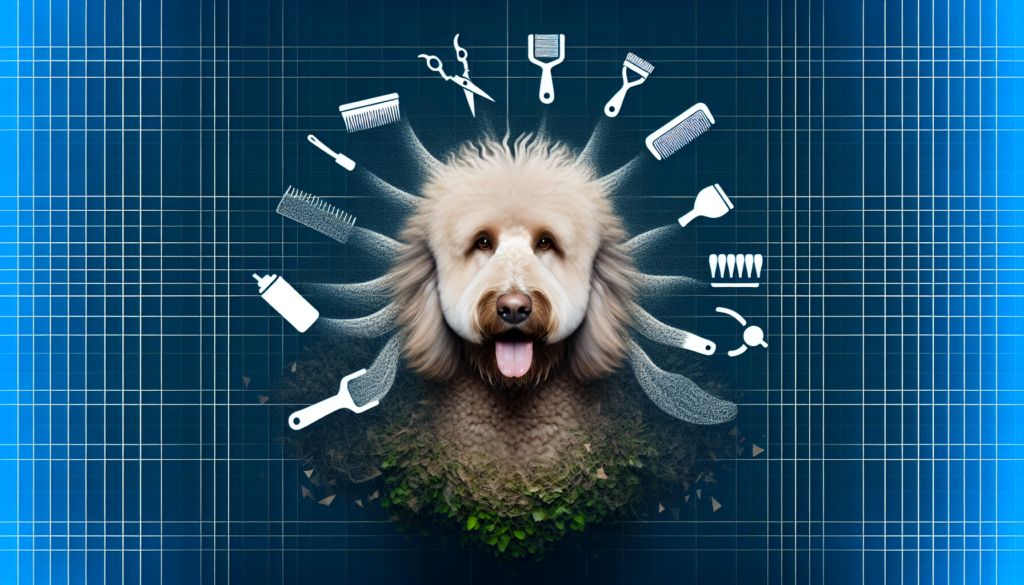So, you’ve brought home a charming Labradoodle and now you find yourself facing the challenge of grooming this unique breed. Don’t worry, we’ve got you covered! In this article, we will walk you through the step-by-step process of grooming a Labradoodle, from brushing their curly coat to trimming their nails. With our expert tips and friendly guidance, you’ll be able to keep your Labradoodle looking picture-perfect and feeling their best!
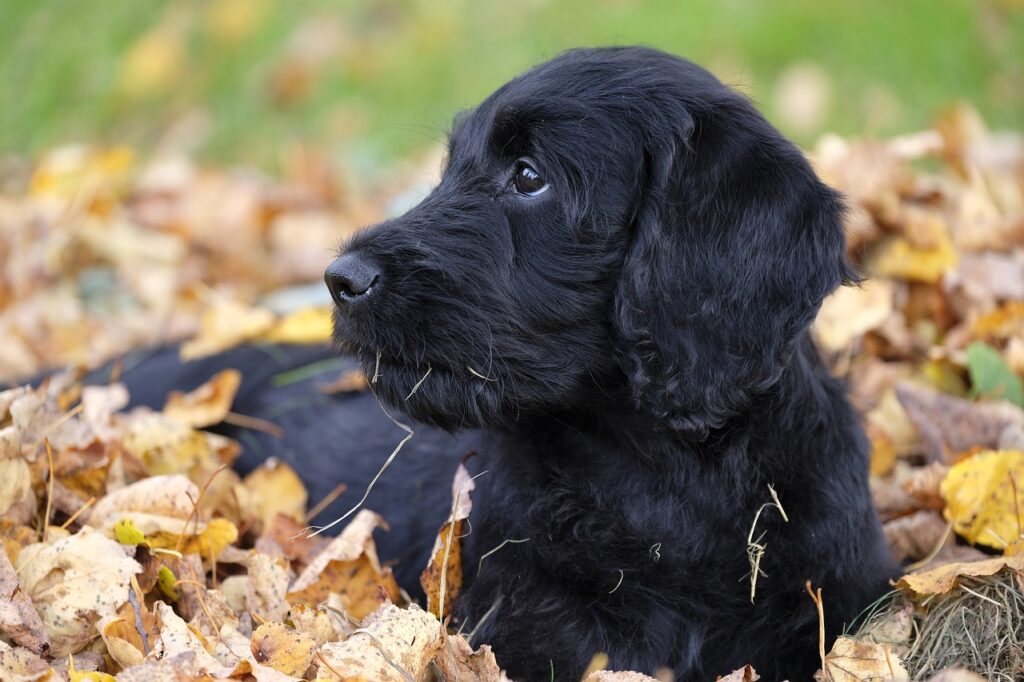
Choosing the Right Tools
Brushes
When it comes to grooming your Labradoodle, one of the most important tools you’ll need is a good brush. Labradoodles have a dense and curly coat that requires regular brushing to keep it looking its best. A slicker brush is highly recommended as it can effectively remove tangles and mats from the coat. Look for a brush with soft bristles that won’t irritate your dog’s skin. Additionally, consider using a pin brush for daily maintenance between grooming sessions.
Combs
Combs are another essential tool for Labradoodle grooming. A fine-toothed comb can help you detect any hidden tangles or mats that the brush might have missed. It is especially useful for those hard-to-reach areas like behind the ears and underbelly. A wide-toothed comb, on the other hand, can be used to comb through the coat after brushing to ensure it is completely free of tangles.
Clippers
If you prefer to trim your Labradoodle’s hair yourself, investing in a good set of clippers is crucial. Look for clippers with adjustable blade lengths to achieve the desired hair length. It’s important to choose clippers specifically designed for pets, as human clippers may not have the power or precision required for grooming a Labradoodle.
Scissors
For more precise grooming, such as trimming the hair around the face and paws, a pair of grooming scissors is indispensable. Look for scissors with rounded tip blades to ensure safety during the grooming process. Remember, grooming scissors should only be used for the Labradoodle’s coat and not for household tasks to maintain their sharpness.
Nail Trimmer
Trimming your Labradoodle’s nails is an essential part of grooming. Overgrown nails can cause discomfort and potential injuries. Look for a nail trimmer specifically designed for dogs, such as a guillotine-style trimmer or a grinder. Make sure you also have styptic powder on hand to stop any bleeding in case you accidentally cut the nail too short.
Preparing for the Grooming Session
Find a Suitable Area
Before you begin grooming your Labradoodle, you’ll want to find a suitable area where you can comfortably and safely groom them. An enclosed space, such as a bathroom or a dedicated grooming area, is ideal to prevent your dog from wandering off mid-grooming.
Secure the Labradoodle
It’s important to ensure the Labradoodle feels secure and comfortable during the grooming session. Use a grooming table, if available, to elevate your dog to a convenient height and prevent them from slipping or running away.
Gather all Grooming Supplies
To avoid any interruptions during the grooming process, gather all the necessary grooming supplies before you start. This includes brushes, combs, clippers, scissors, nail trimmers, ear cleaning solution, and any other products you may need.
Brush the Labradoodle’s Coat
Before diving into the grooming session, it’s crucial to brush your Labradoodle’s coat thoroughly. This will help remove any loose hairs, tangles, or mats, making it easier to groom and preventing further tangles during the grooming process. Be gentle yet thorough as you brush, ensuring you reach all the layers of the coat.
Brushing and Detangling the Coat
Start with a Slicker Brush
Begin the brushing process with a slicker brush. This type of brush has fine, short wires close together, making it effective in removing tangles and mats from the Labradoodle’s dense coat. Brush in the direction of hair growth, using gentle strokes to prevent any discomfort for your dog.
Divide the Coat into Sections
To ensure you don’t miss any areas, it’s helpful to divide your Labradoodle’s coat into sections. This will make the brushing process more manageable and systematic. Start with the back and work your way to the belly, chest, legs, and tail. Remember to brush behind the ears and under the armpits, as these areas are prone to tangling.
Brush with Gentle Strokes
As you brush the Labradoodle’s coat, use gentle strokes to prevent any discomfort or skin irritation. Pay extra attention to areas that are prone to matting, such as the belly and behind the ears. If you encounter any tangles or mats, be patient and slowly work through them using the slicker brush or a comb.
Detangling Matted Hair
If you come across mats that are too stubborn to remove with a brush or comb, you may need to consider using a detangling spray or conditioner. Apply a small amount to the mat and gently work it through with your fingers or a comb. Take care not to tug or pull on the mat, as this can cause discomfort or even skin damage.
Trimming the Labradoodle’s Hair
Identify the Desired Hair Length
Before you start trimming your Labradoodle’s hair, it’s important to have a clear idea of the desired hair length you want to achieve. Labradoodles can have various haircuts, ranging from a shorter “puppy cut” to a longer, more natural look. Take into consideration your Labradoodle’s lifestyle, coat type, and personal preferences when deciding on the length.
Use Clippers for Body and Legs
When trimming the Labradoodle’s body and legs, clippers are your best tool. Start with a longer guard comb attachment and gradually work your way to shorter lengths until you achieve the desired look. Remember to go slow and use smooth, steady movements to ensure an even and professional-looking trim.
Scissor Technique for Head and Face
When it comes to the head and face, using scissors can provide better control and precision. Start by trimming around the eyes to ensure clear visibility for your Labradoodle. Use rounded-tip scissors to carefully trim around the ears, muzzle, and eyebrows, ensuring you maintain a balanced and symmetrical appearance.
Trimming the Tail
The Labradoodle’s tail can also benefit from a trim to maintain a neat and tidy appearance. Use scissors or clippers to trim any excess hair, keeping it in proportion with the rest of the body. Be cautious when working around the tail area, as it can be sensitive and require extra care.
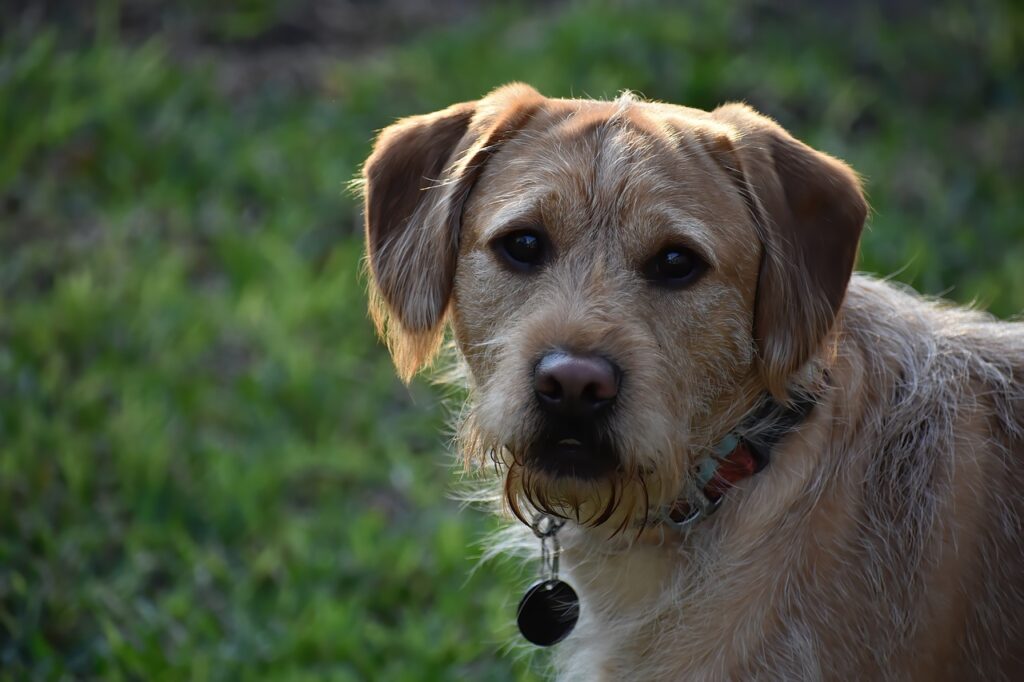
Bathing and Drying the Labradoodle
Choosing a Dog-Friendly Shampoo
When it’s time to bathe your Labradoodle, make sure to use a shampoo specifically formulated for dogs. Avoid using human shampoos as they may contain ingredients that can be harmful to your dog’s skin and coat. Look for shampoos that are gentle, hypoallergenic, and suitable for your Labradoodle’s specific coat type.
Prepare the Bathing Area
Before bringing your Labradoodle into the bathing area, prepare everything you need for a smooth bathing experience. Lay down a non-slip mat or towel in the bathtub or designated bathing area to prevent your dog from slipping. Have towels, shampoo, and any other grooming supplies within reach for easy access during the bath.
Wetting the Labradoodle’s Coat
Using lukewarm water, wet your Labradoodle’s coat thoroughly, ensuring you reach all areas, including the belly, legs, and tail. Use a gentle showerhead or a jug to pour water over your dog, taking care not to spray water directly into their ears or eyes.
Applying Shampoo and Gently Massaging
Once your Labradoodle’s coat is wet, it’s time to apply shampoo. Pour a small amount into your hand and lather it up before gently massaging it into your dog’s coat. Pay special attention to areas that are prone to dirt and odor, such as the armpits and groin.
Rinsing Thoroughly
After the shampoo has been applied and massaged, thoroughly rinse your Labradoodle’s coat with lukewarm water. Make sure to rinse until the water runs clear, ensuring no residue is left behind that could potentially irritate your dog’s skin.
Using a Towel to Dry the Coat
Once your Labradoodle is all rinsed, it’s time to dry their coat. Use a clean, absorbent towel to gently pat the coat dry. Avoid vigorous rubbing, as this can cause tangles or damage to the hair. Take your time and ensure the coat is mostly dry before proceeding to any optional blow drying.
Considering Optional Blow Drying
If your Labradoodle has a long or dense coat, you may want to consider using a blow dryer on a low, cool setting to speed up the drying process. Keep the dryer at a safe distance from your dog’s skin, ensuring it does not get too hot. Always monitor your Labradoodle’s comfort and avoid using the dryer if it causes any distress.
Cleaning the Labradoodle’s Ears
Gather Ear Cleaning Solution
To keep your Labradoodle’s ears clean and free from excess wax or debris, it’s important to have an ear cleaning solution on hand. Look for a gentle and dog-friendly ear cleaner recommended by veterinarians.
Inspect for Signs of Infection
Before cleaning your Labradoodle’s ears, take a moment to inspect them for any signs of infection or irritation. Look out for redness, swelling, discharge, or a foul odor. If you notice any of these symptoms, it’s best to consult with your veterinarian before proceeding with the cleaning process.
Wipe the Outer Ear
Using a clean cotton ball or a soft cloth, gently wipe the outer ear to remove any visible dirt or debris. Avoid inserting anything into the ear canal, as this can cause injury and discomfort to your dog. Focus on the folds and crevices of the outer ear, ensuring you clean thoroughly but gently.
Apply Ear Cleaner and Massage
Once the outer ear is clean, it’s time to apply the ear cleaner. Follow the instructions on the product label for the recommended amount to use. Gently lift the ear flap and apply the cleaner into the ear canal. Massage the base of the ear for a few seconds to help loosen any wax or buildup.
Allow Labradoodle to Shake Out Excess Solution
After massaging the ear cleaner, allow your Labradoodle to shake their head to help remove any excess solution. This is a natural reflex for dogs to get rid of any foreign substances in their ears. Have a towel nearby to catch any droplets or debris that may be expelled.
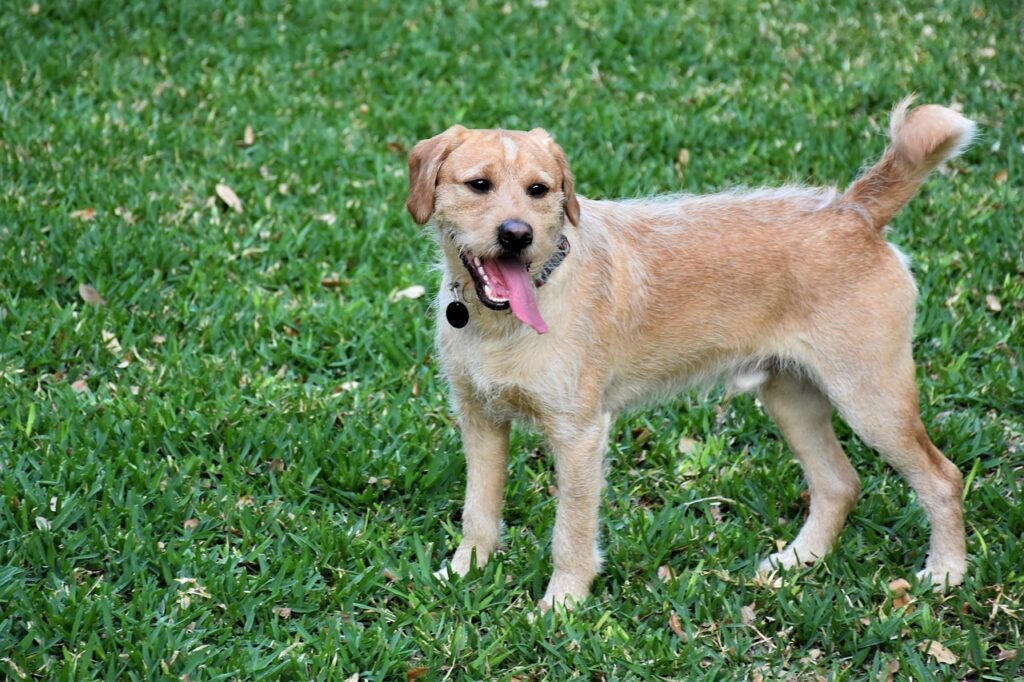
Trimming the Labradoodle’s Nails
Choose the Right Nail Trimmer
To trim your Labradoodle’s nails effectively and safely, it’s important to choose the right nail trimmer. Guillotine-style trimmers and grinders are commonly used for Labradoodles. Make sure the trimmer you select is appropriate for your dog’s size and nail thickness.
Get the Labradoodle Comfortable
Before attempting to trim your Labradoodle’s nails, ensure they are in a calm and relaxed state. Encourage your dog to sit or lay down comfortably, providing treats and positive reinforcement to create a positive association with nail trimming.
Identifying the Quick
The quick is the living part of your Labradoodle’s nail that contains blood vessels and nerves. It’s important to identify the quick before trimming to avoid causing pain or bleeding. In light-colored nails, the quick is typically more visible as a pink area within the nail. However, in darker nails, it can be more challenging to see. Proceed with caution when trimming dark nails, taking small increments off at a time.
Trimming the Nails with Care
Hold your Labradoodle’s paw firmly but gently, and carefully trim the tip of the nail, avoiding the quick. Use smooth and steady motions to prevent any sudden movements that can startle your dog. If your dog has dewclaws, make sure to trim those as well. Take breaks if needed, ensuring your dog remains calm and comfortable throughout the process.
Stopping Any Bleeding
Accidents can happen, and if you accidentally trim the nail too short and it starts to bleed, don’t panic. Apply styptic powder or cornstarch to the bleeding nail, using gentle pressure to stop the bleeding. If the bleeding persists or the nail appears to be injured, consult with your veterinarian for further guidance.
Maintaining the Labradoodle’s Hygiene
Regular Teeth Brushing
Proper dental care is essential for your Labradoodle’s overall health and hygiene. Brushing your dog’s teeth regularly can help prevent dental issues such as gum disease and bad breath. Use a toothbrush and toothpaste specifically designed for dogs, as human toothpaste can be harmful if swallowed.
Checking and Cleaning the Eyes
Regularly check your Labradoodle’s eyes for any signs of redness, discharge, or irritation. Use a damp cloth or a dog-friendly eye wipe to gently clean the outer area around the eyes. Avoid getting any cleaning solution or wipes in the eyes themselves to prevent discomfort.
Anal Gland Expression
Labradoodles, like many other dog breeds, have anal glands that may require occasional expression. These glands can become impacted or infected if not properly maintained. If you notice your Labradoodle scooting or excessively licking their rear end, it may be a sign that their anal glands need to be expressed. Consult with your veterinarian or a professional groomer for assistance in properly expressing the anal glands.
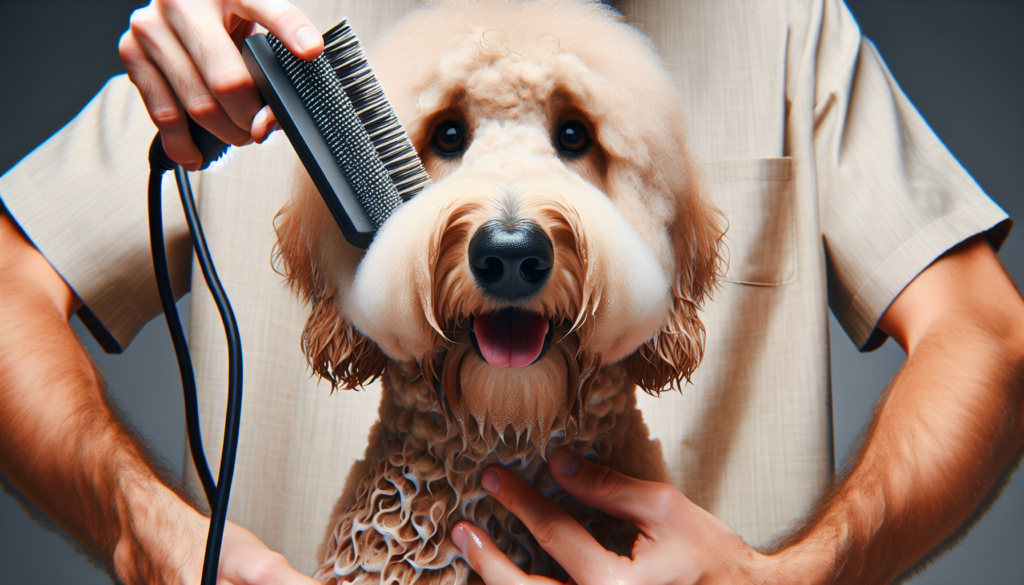
Dealing with specific challenges
Managing Matting and Tangles
Labradoodles’ thick and curly coats can be prone to matting and tangles, especially if not properly maintained. Regular brushing and detangling sessions can help prevent matting. If your Labradoodle’s coat is severely matted, it may require professional grooming to remove the mats safely and without causing discomfort to your dog.
Preventing Excessive Shedding
While Labradoodles are known for having low shedding coats, some may still shed to a certain extent. Regular brushing can help remove loose hairs and minimize shedding. Additionally, maintaining a healthy diet and ensuring your Labradoodle receives adequate exercise and grooming can contribute to a healthier coat and potentially reduce shedding.
Tackling Skin Irritations or Allergies
Labradoodles can be prone to skin irritations or allergies that may cause itching, redness, or discomfort. If you notice any signs of skin issues, it’s important to consult with your veterinarian for an accurate diagnosis and a suitable treatment plan. Regular grooming, including bathing with appropriate products, can help alleviate and prevent skin irritations.
Addressing Tear Stains
Some Labradoodles may develop tear stains, which can cause discoloration around the eyes. Regularly wiping the area around the eyes with a damp cloth or a dog-friendly eye wipe can help minimize tear stains. However, if tear stains persist or worsen, it’s recommended to consult with your veterinarian for further evaluation and guidance.
Establishing a Grooming Routine
Frequent Brushing
To keep your Labradoodle’s coat in a healthy and tangle-free condition, it’s important to establish a regular brushing routine. Aim to brush your Labradoodle at least two to three times a week to prevent matting and maintain a well-groomed appearance.
Regular Baths
Labradoodles generally require baths every four to six weeks. However, the frequency may vary depending on your dog’s specific coat type and lifestyle. Regularly bathing your Labradoodle not only keeps their coat clean but also helps to minimize odor and maintain overall hygiene.
Trimming as Needed
Keeping your Labradoodle’s hair at the desired length requires regular trimming. Depending on the desired haircut and hair growth rate, you may need to trim your Labradoodle’s hair every six to eight weeks. However, individual needs may vary, so it’s essential to assess your dog’s specific requirements and consult with a professional groomer if needed.
Visiting Professional Groomers
While some Labradoodle owners prefer to groom their dogs at home, visiting a professional groomer can be beneficial, especially for intricate grooming tasks or specific haircut styles. Professional groomers have experience working with different coat types and can provide expert advice and styling techniques to achieve the desired look for your Labradoodle.
Maintaining Good Hygiene
In addition to regular grooming sessions, maintaining good hygiene practices for your Labradoodle is crucial. This includes daily checks for any signs of skin or coat issues, regular teeth brushing, checking and cleaning the eyes, and addressing any specific hygiene needs your Labradoodle may have.
By following proper grooming techniques, acquiring the right tools, and establishing a grooming routine, you can ensure your Labradoodle looks and feels their best. Regular grooming not only maintains their physical appearance but also contributes to their overall health and well-being. Remember to always approach grooming in a calm and positive manner, making it an enjoyable experience for you and your Labradoodle.
